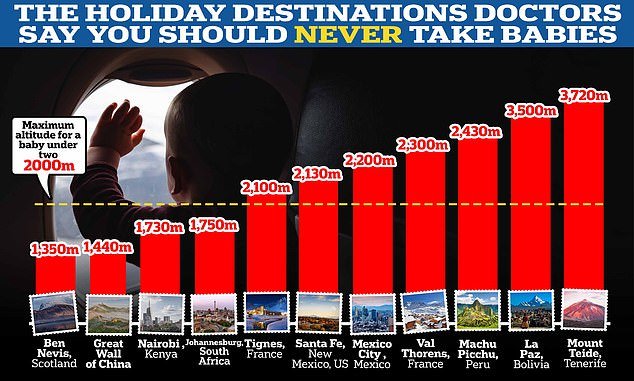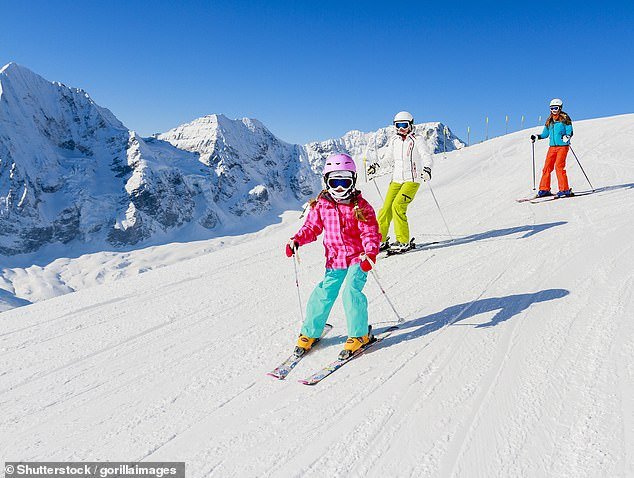Skiing in the snow-capped Alps this winter might sound like your perfect family vacation.
But the altitude of the popular travel destination poses a deadly risk to babies, according to doctors.
Altitude sickness usually improves within a few days. People are advised to rest so they can acclimate and avoid the unpleasant headaches and nausea that come with reduced oxygen intake.
However, in extreme cases it can be life-threatening, especially for children who find it more difficult to adjust to the changed atmosphere.
More than 100 doctors and pediatricians working in the French Alps were asked about their advice to parents who want to travel to extreme altitudes with their children.
According to their consensus, children under 2 years of age should not be at an altitude of more than 2,000 m.
According to their recommendation, this makes ski resorts such as Val Thorens (2,300 m) and Tignes (2,100 m) in the French Alps potentially dangerous.

Children under two years of age should not be at an altitude of more than 2,000 m, doctors warn. This makes ski resorts such as Val Thorens (2,300 m) and Tignes (2,100 m) in the French Alps and Teide on the Spanish island potentially dangerous

Doctors recommend not taking children under one month old above an average altitude of 1,200 m, which is just below the altitude of Ben Nevis in Scotland (1,345 m).
Holidaying in Tenerife and taking the cable car up Mount Teide (3,715 m) or visiting the Teide Observatory (2,390 m) would go against this advice.
Doctors recommend not taking children under one month higher than 1,200 m in a day as it may not be safe. This applies, for example, to Ben Nevis in Scotland (1,345 m) and the Great Wall of China, which is 1,439 m above sea level.
Babies under three months old should not travel higher than 1,500 m in a day, and children under one year old should not travel higher than 1,600 m, the magazine says Pediatric Archives.
In addition, children under two years of age should not climb higher than 2,000 m.
Similar restrictions applied to long stays at high altitudes.
This means that places like La Paz in Bolivia (3,500 m), Santa Fe in New Mexico (2,100 m) and Machu Picchu (2,400 m) are theoretically taboo.
While vacationing in these locations is “fashionable,” the high altitude increases the risk of sudden infant death syndrome (SIDS) – the unexpected and unexplained death of a child.
IYoung children with a respiratory infection such as a cold or bronchiolitis are also at risk at high altitude because they are at greater risk of not getting enough oxygen.
However, aircraft flying at altitudes of around 10,000 to 13,000 m do not pose the same risk as onboard oxygen levels are adjusted to compensate for the dizzying altitudes.
In addition, an increase in altitude of more than 2,500 m in a short period of time can increase the likelihood of an infant being hospitalized for bronchiolitis, according to the journal article by researchers at the Institute for Training and Research in Mountain Medicine in France.
When traveling to these altitudes with children, doctors recommended using a bottle or pacifier, breastfeeding and stopping every 500 m to adjust to the rapid changes in air pressure.
But it’s not just overall size that affects toddlers’ health – according to the survey, babies shouldn’t climb more than 1,000m over the course of a day to give them a chance to acclimate.
This means precautions should be taken when traveling to ski resorts and even UK locations such as Snowdon in North Wales (1,085m).
However, the study finds that advice for parents with children who live at high altitudes is different because they can do it better Adaptation to changes in air pressure.
